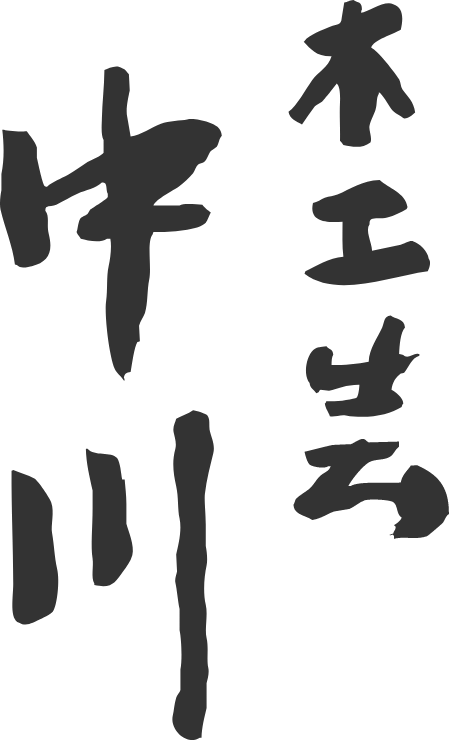About Nakagawa Woodworking
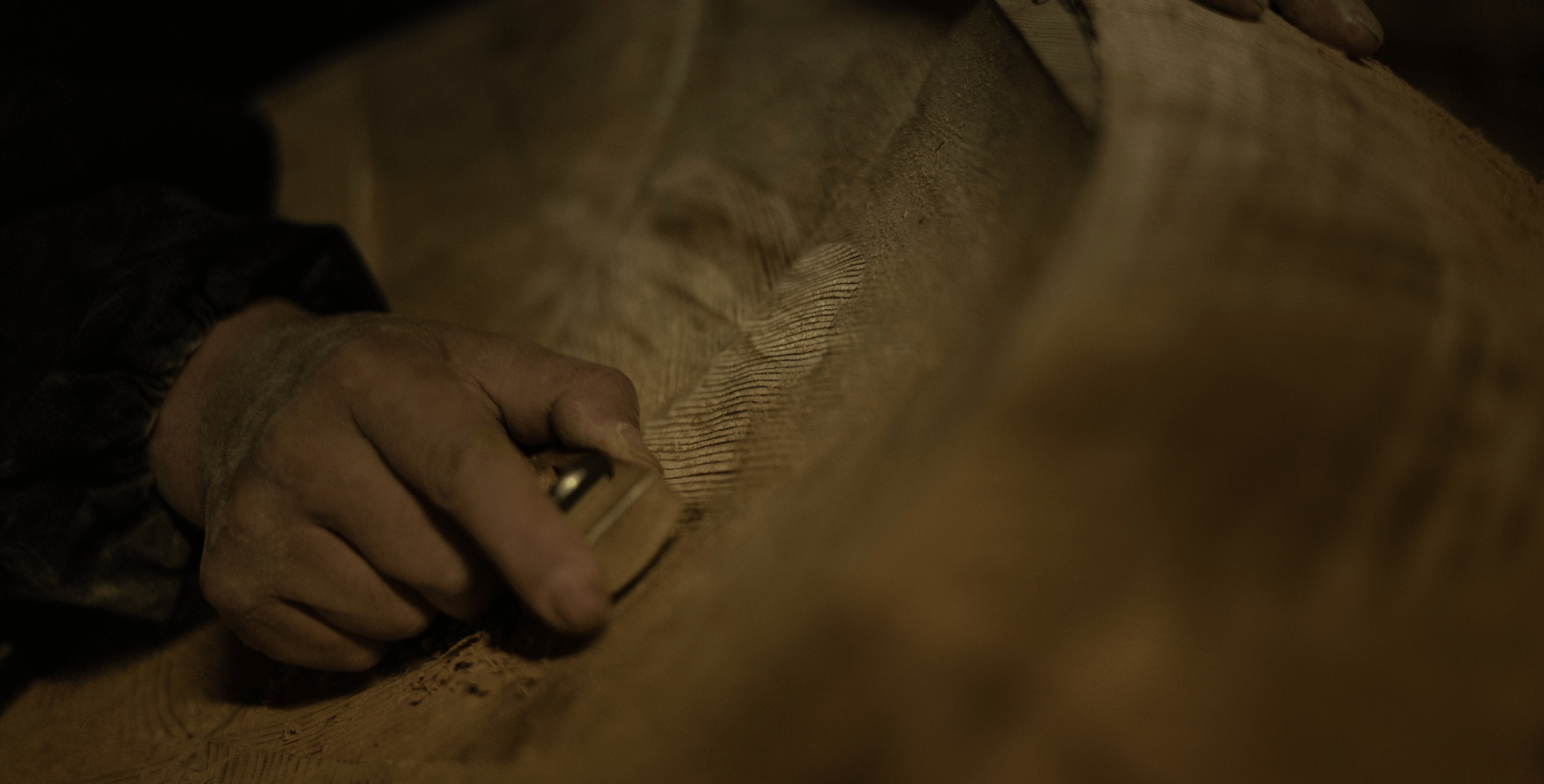
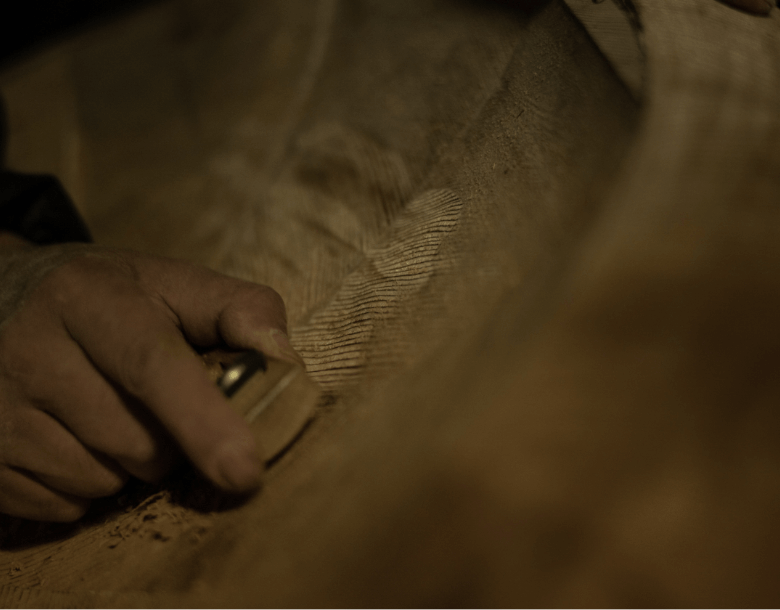
Nakagawa Woodworking first began when founder Kameichi started his apprenticeship at a well-established Oke (wooden pails or buckets) shop in Kyoto.
In the early days, Oke were indispensable tools for daily life, and it was common for each household to have 10 or 20 of them. They were used for washing vegetables and rice, for storing cooked rice, for storing tofu at the tofu shop, for bathing and for bathtubs, the list is endless. From Oke used for delivering babies to Oke used for coffins, Oke have been a familiar tool for Japanese people throughout history.
Kyoto, of course, has long been frequented by people from the political, business, and entertainment establishment; and as such, there were many inns, ryotei (Japanese-style inns), and teahouses frequented by these high-class people, where “wooden Oke” were used not as everyday utensils but as vessels for hospitality and luxury.
Nakagawa Woodworking's History
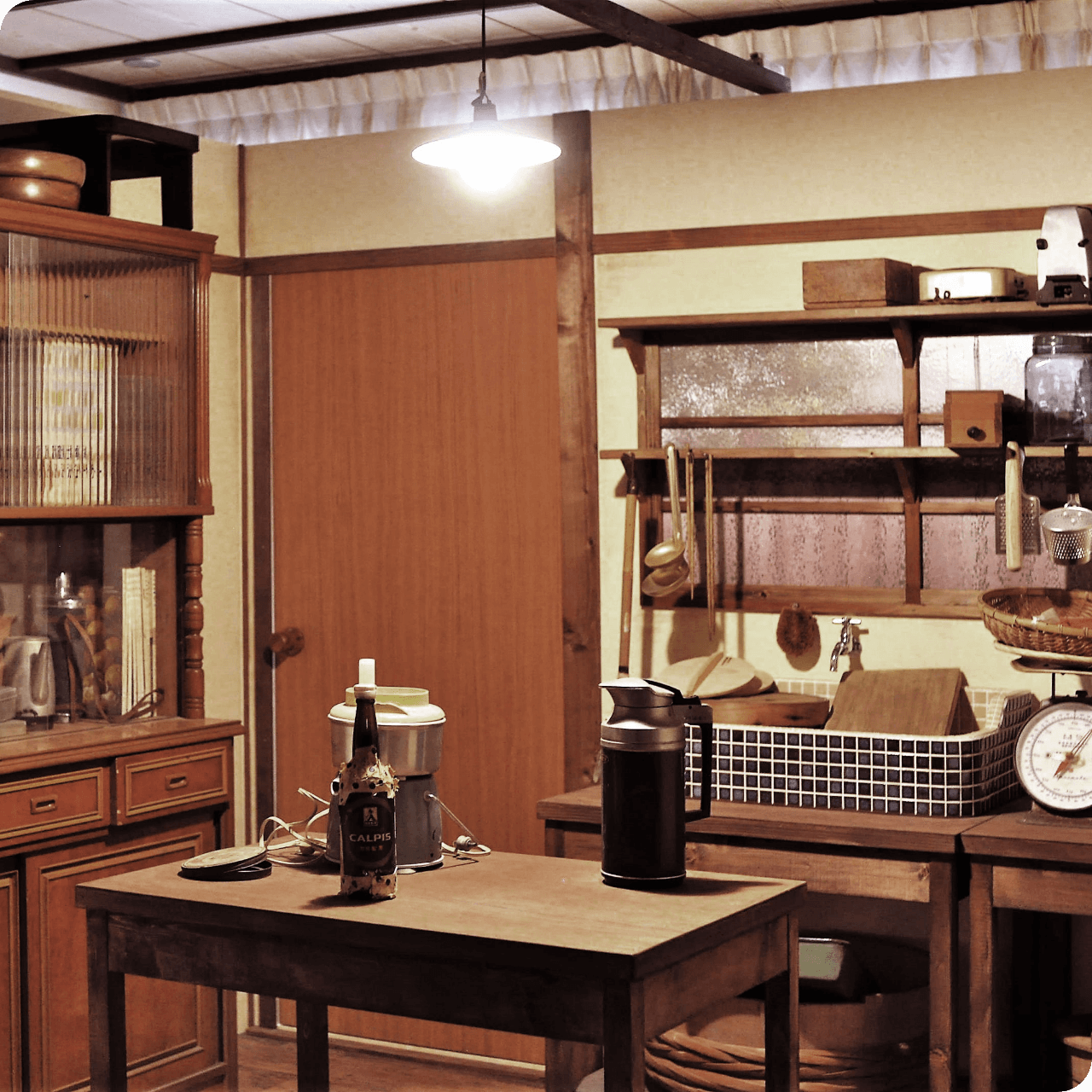
However, after World War II, Japan experienced a period of rapid economic growth, and its lifestyle changed drastically. Wooden Oke, which had been indispensable in Japanese daily life up to that point, were replaced by plastic products, and wooden Oke almost disappeared from daily life.
At the same time, the Oke makers, of which there used to be at least one in the town, went out of business one after another. Our workshop too experienced a sharp decline in sales, and we were in a state unable to carry on the traditional craft of making Oke.
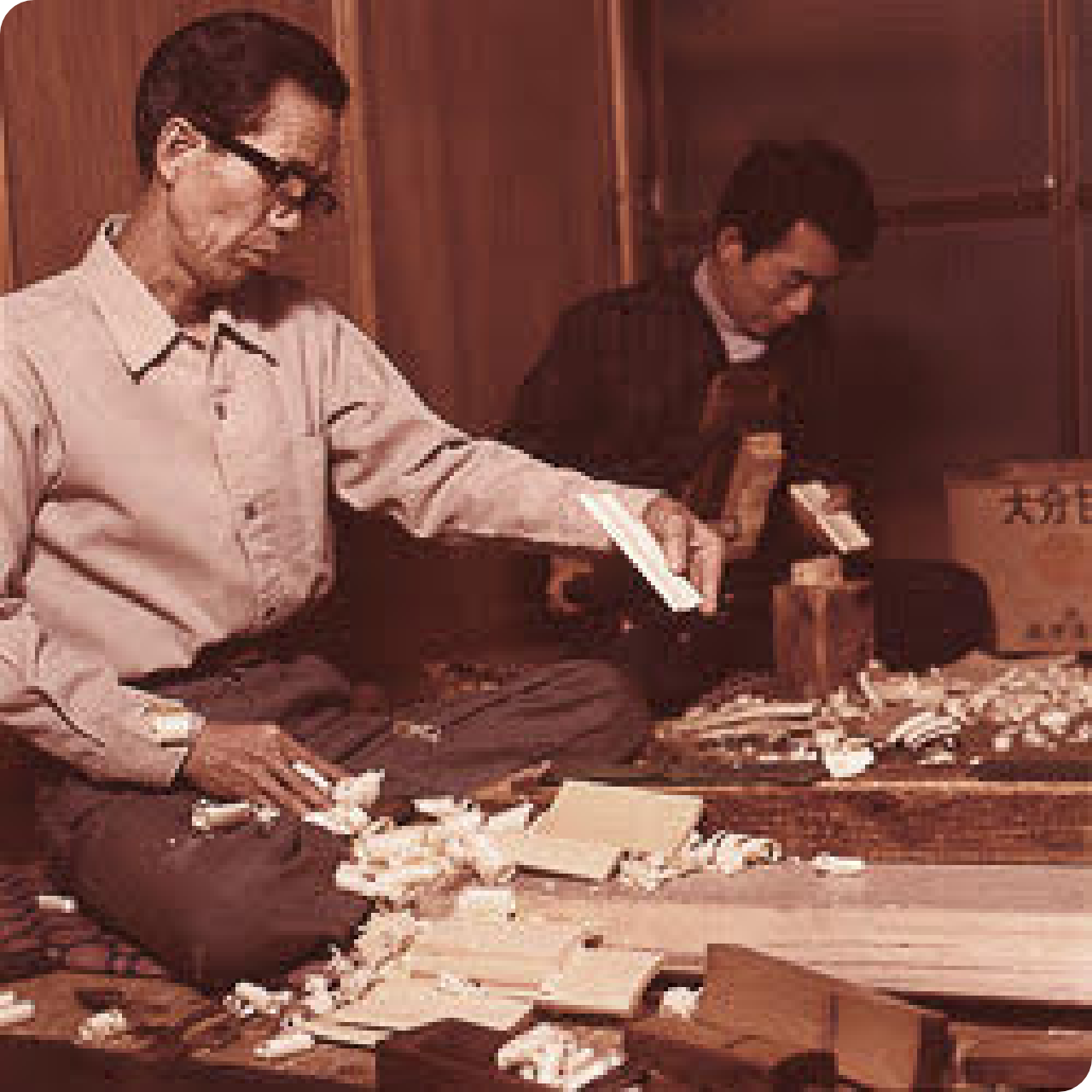
However, Seiji, a second generation craftsman, sublimated the work as a work of art while using the traditional technique of Oke making, and was recognised as a Preserver of Important Intangible Cultural Properties for his efforts. He was also able to survive because of orders from inns and ryotei, with whom he had been in contact since the founder's time, ordering his Oke for hospitality / luxury use.
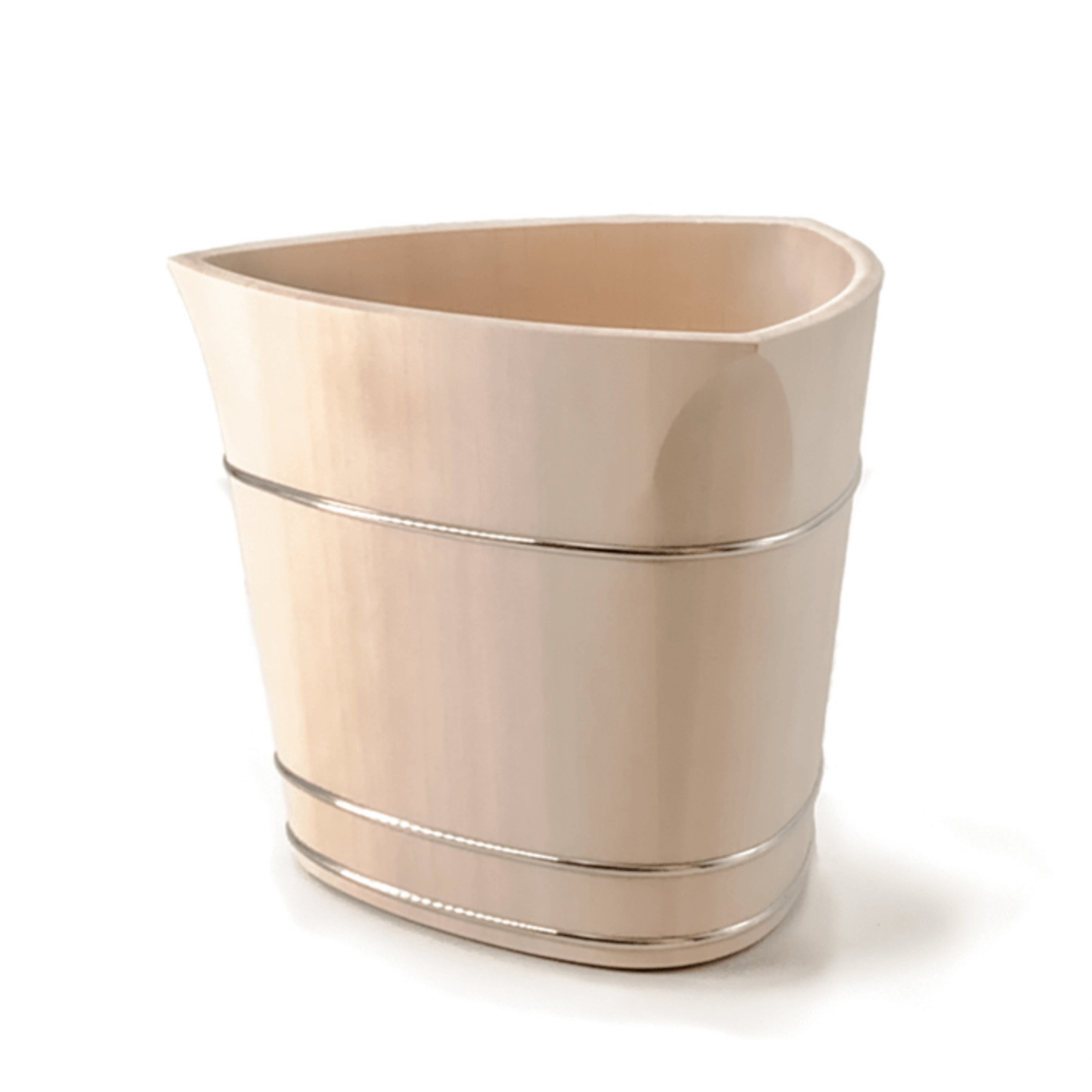
And now to the present day.
Nakagawa Woodworking is now aiming towards:
"Tradition with Innovation"
Nowadays, every traditional craft should be aware of this term. At Nakagawa Woodworking, the second generation applied the traditional technique of Oke making and innovated upon it as a work of art.
In June 2003, Shuji, the third generation of craftman, spun off from the original Kyoto workshop and opened Nakagawa Woodworking Hira in Otsu, Shiga Prefecture, and in 2010, together with a French champagne maker, he introduced a uniquely designed champagne cooler, which caught worldwide attention. The shape of the cooler was designed in a way that was beyond the imagination of what Oke could be.
Originally, the basic form of a wooden Oke is a simple circle, but Shuji has explored the design of wooden Oke by combining multiple circles and transforming them into sharp ovals, triangles, pentagons, and corrugated shapes while maintaining the principle arch structure. In particular, he believes that the arch structure of the wooden Oke has some affinity with architecture, and focusing on this point, he also aims to create ""craft architecture"" that utilizes the structural beauty and functionality of Oke.
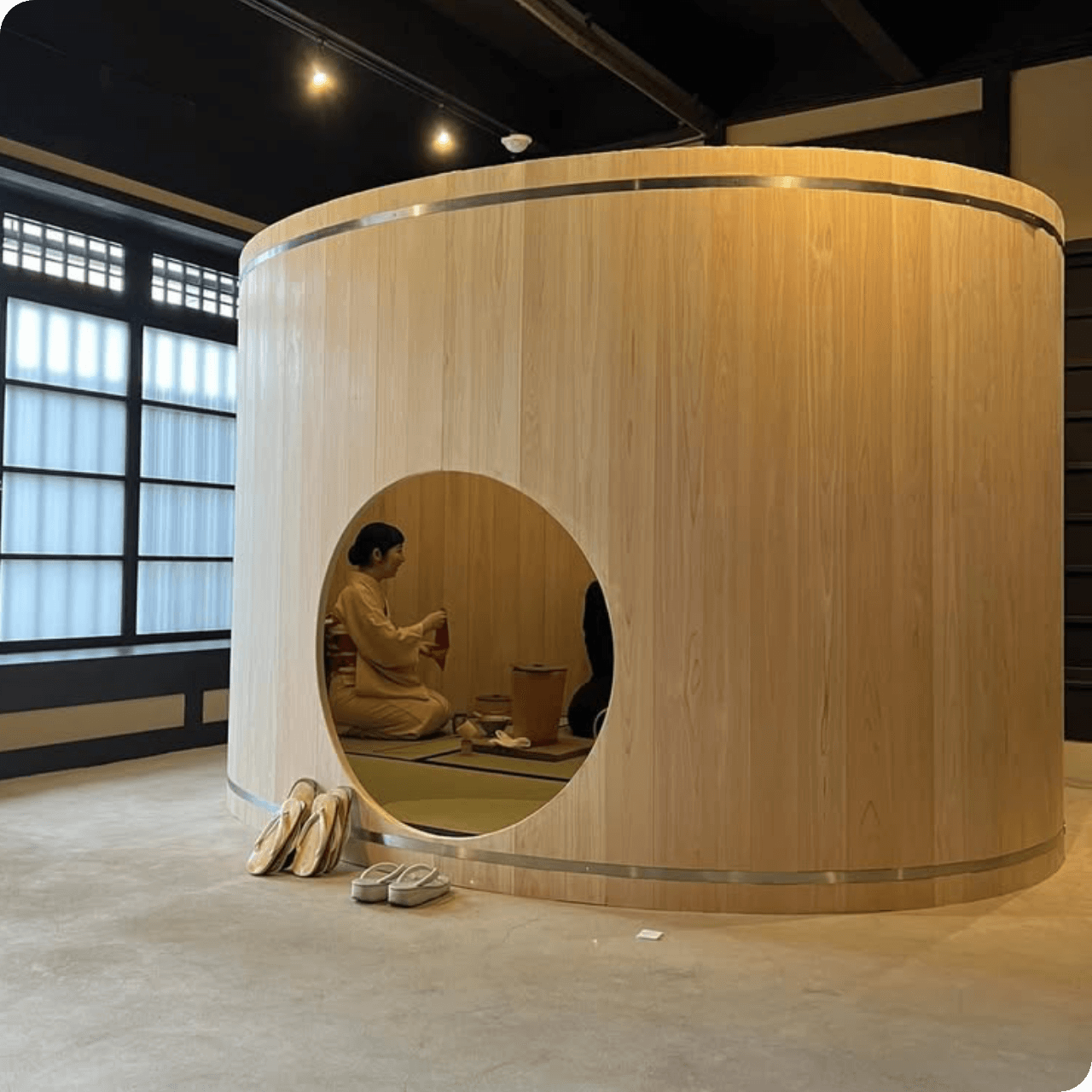
Together with the youth, for the future of crafts.
In 2024, the first step toward this goal was to create a "wooden Oke tea room". Using Japanese cypress wood and the traditional Tagajime technique, we created a space with the unique warmth and aroma of wooden Oke and the expansive space provided by the arch structure, creating a tea room space filled with tranquility and peacefulness.
The complex structural calculations and the production of a work of such extraordinary scale for a workshop that mainly produces tableware were a great challenge, but working together with young craftsmen through trial and error, we believe we were able to shed stereotypes and update our creativity and ability to make things flexibly and give shape to it.
Nakagawa Woodworking Hira aims to create new values through collaboration with different fields such as design, art, technology, and architecture in order to preserve the traditional techniques and culture of wooden barrels for the next 100 years.
For it is Oke that contains the wisdom and techniques of our forefathers.
For we still believe that the possibilities of Oke are still endless.
About Shuji Nakagawa
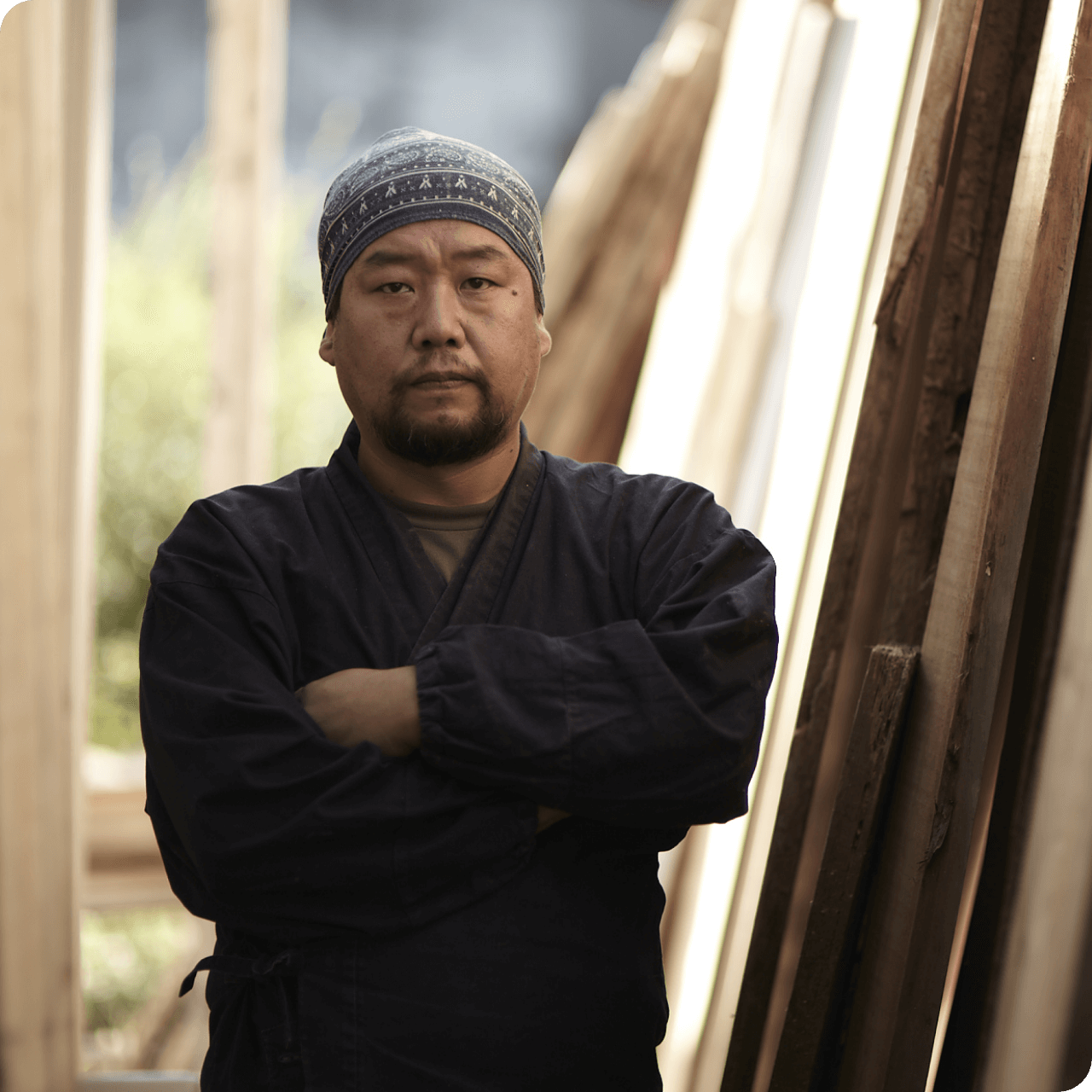
Born in Kyoto in 1968, Nakagawa graduated from Kyoto Seika University in 1992 with a degree in sculpting art, while at the same time he studied under his father, Seiji Nakagawa, a Preserver of Important Intangible Cultural Properties (Living National Treasure of Japan), learning woodworking techniques such as Oke making techniques, joinery, and gouging. In addition, during this time, he also started being active in the contemporary art scene, exhibiting his work in solo exhibitions and competitions, winning many prizes, and continuing his activities as both a traditional craftsman and a contemporary artist. In 2003, he opened his own workshop, Nakagawa Woodworking Hira in Otsu, Shiga Prefecture, and devoted himself to the craft of woodworking. In 2010, he created a champagne cooler for a world-renowned luxury champagne brand in France, and with that, he began exploring new possibilities for wooden Oke. He also began collaborating with designers and artists within Japan and beyond, and even began exhibiting his work overseas.
The Materials we Use
-
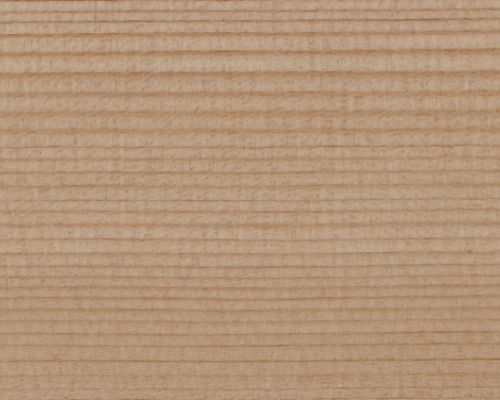
Kiso Sawara Cypress It is characterized by its beautiful light yellowish color and light fragrance. It is said to absorb excess water and make rice tastier, which makes it a suitable container for a wide range of cooking uses such as for storing rice, and for sushi.
-
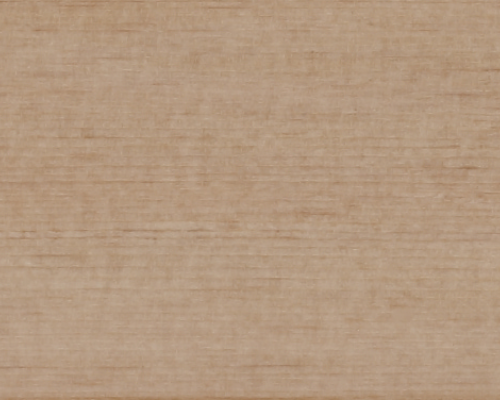
Kiso Hinoki Cypress It is characterized by its white bark with a slight reddish tinge and has a strong aroma. It has strong antibacterial properties and is resistant to rotting. It is also resilient and strong, and thus widely used for building materials and bathtubs.
-
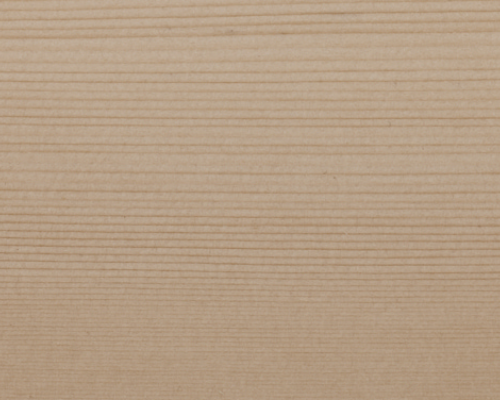
Japanese Umbrella-Pine Japanese Umbrella-Pine is characterized by its beautiful white bark and its resistance to water. It has a fresh herb-like aroma and is considered one of the most refined trees native to Japan. Because of its water-resistant characteristics, it is often used for bathing pails, bathtubs, pitchers, and other water-related items.
-
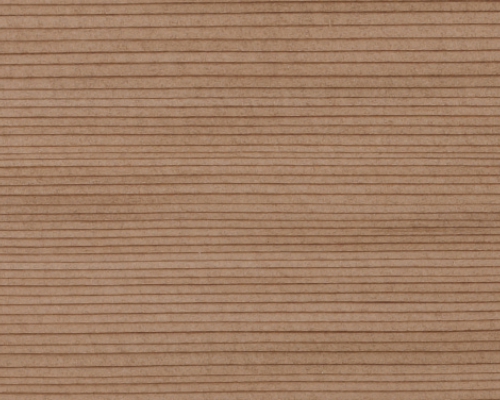
Yoshino Cedar Cedar is the most common wood in Japan and is widely used for everything from personal items to building materials. As time goes by, the color will change to a deeper shade, making it ideal for furnishings and other items. It has also been used as a sake brewing barrel since ancient times, and its aroma and grain can be enjoyed as a sake vessel.
-
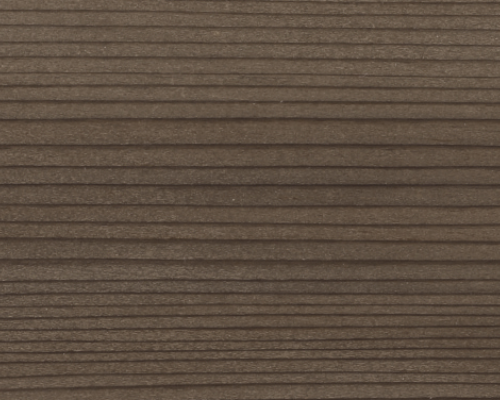
Jindai Cedar Jindai Cedar is a type of cedar that has been buried in the ground from a thousand to a couple thousand of years. The iron in the soil and the tannin in the wood over time produces a very beautiful grayish brown color. It is a very precious wood, and is usually processed into tea ceremony utensils, flower vases, etc.
